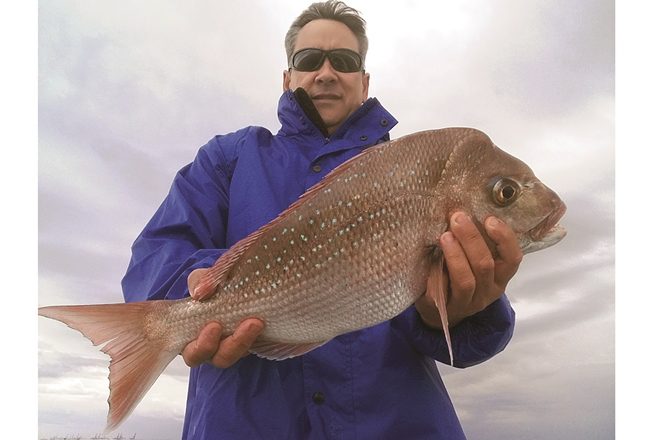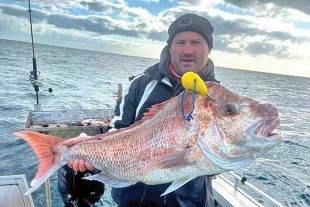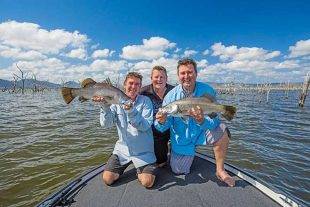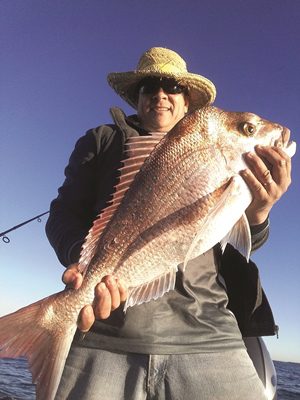
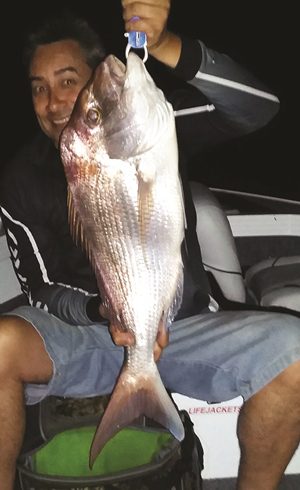
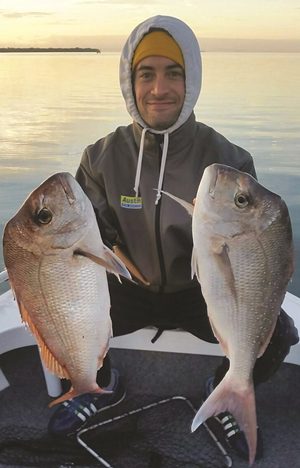
FORTY years ago, I was just a young lad when my father introduced me to the wonderful world of boating and fishing.
I looked forward to winter. Dad and I would set the alarm clock for the crack of dawn, put the 18’ half cabin boat in at Jacobs Well and zip out to Jumpinpin for a morning fishing for bream. I remember it was so cold that tears would stream out of our eyes and snot would run down from our noses as we poked our heads up through the zipper opening of the canopy on the way out.
We used yabbies back then and catching bream was great fun. But one thing I didn’t enjoy was watching Dad struggle hand-winching the heavy half cab onto the trailer. It was so heavy the rear of the car would nearly scrub on the tyres, not to mention the hassle of towing it and reversing it up the driveway at home.
Well that was about 1977 and I’m in my fifties now, and one of the things I like about going fishing these days is I don’t own a big boat. By choice I only own a 4.2m tinnie. It’s not 1977 anymore and while slipping a yabby on a hook for bream was great fun back then, let’s aim a little higher in 2020.
Further on in this article when referring to tips about catching ‘snapper’ in the shallows, note I’m not referring to 35-50cm squire. While they are great fun to catch on light gear, we are talking about those elusive, big 65-80cm (or even bigger) trophy size Moreton Bay snapper. These days I either fish alone or with my two sons Jason and Tim.
We have been exploring the bay on and off for 30 years and have spent countless hours experimenting at different locations with a variety of fishing methods. A lot has been written about catching snapper in the bay, but this article highlights that you don’t necessarily need a big boat or to travel long distances to achieve great results.
In a small boat, you soon realise trying to fish open waters is too weather dependent, so a long time ago we dedicated our time to fishing the shallows around the Moreton Bay islands in depths of 6m or less.
Having a game plan
I always have a plan in mind a couple of days before a fishing trip. Of course, the weather is the first check. In a small boat I want a wind speed of no more than 10-15 knots. Next is knowing where I intend to fish.
If it’s the western side of an island and the forecast is a 10-15 knot easterly, I know it may be a bit uncomfortable getting across open water, but once up close to the western side of an island it will be calm, safe and enjoyable to fish.
In a small boat, the more exposed islands like Mud are best kept for the cooler months, as in summer the afternoon northerly wind can make the mouth of the Brisbane River and in fact all of the open bay a dangerous place to be. We have found in summer some big snapper can be caught in the more sheltered southern bay anyway.
One of our recent trips to Macleay Island resulted in plenty of sharks being caught, but we also landed a nice 80cm beast of a snapper in just 5m of water. Spend some time exploring Google Maps and sites like Navionics to look more closely at depth contours surrounding islands.
Just like flathead and whiting, as the tide comes in, snapper move up to the shallows for a feed. Dark nights with a rising tide can be a lot of fun, though it’s best to pick your spot early in the shallows before dusk, anchor up and berley, berley and berley again. As darkness approaches, going into stealth mode is important. No shining lights on the water and no dragging anchor chains into the anchor well.
Just as many quality snapper have been caught during daylight, however fishing midweek when there is little or no boat traffic increases your chances enormously. The single best piece of equipment that enhanced our fishing results was an electric motor with the ability to hold the boat in one spot. This eliminates even thinking about using the anchor. The ability to quietly move into our fishing spot without noise, the flexibility to move a metre or two and hold us there quietly and continuously is a game changer.
Bait and tackle
I’m old school. I’ve tried and tried with soft plastics and while some smaller snapper have been boated, plastics and I just don’t get along. I understand the increased sensitivity of using braid and fluorocarbon leaders, but I’ve lost way too many bigger snapper due to either hooks pulling, leader being bitten through or having been spooled using light gear and a 2500 series reel.
Bigger snapper in the shallows hit like freight trains and for me, it’s mono line all the way. I use a 7’ rod with a sensor tip, a 5000 series reel, 12lb mono main line, 20lb mono leader and a single 8/0 circle hook. Once boated and you’re staring inside a big snapper’s mouth, an 8/0 hook can suddenly look really small, so don’t think for a second an 8/0 is too big.
It’s not uncommon to watch as the reel screams and, in no time, 100m of line peels off. The larger-capacity reel gives time to tire the fish out without being spooled, and the mono provides plenty of stretch. Rods, reels and tackle don’t have to be expensive either.
Plastics and lures do have their place in my tackle box, though for the purpose of catching bait. If you think buying a packet of frozen squid, some stinky old pilchards or a frozen packet of prawns from the servo is good enough, don’t bother wasting your time targeting big bay snapper.
Part of the game plan is allowing hours of time on the way out, or even the night before we intend to fish, to catch our own fresh bait. It’s honestly that important. And hey, it’s another learning curve and skillset to add to your list, and enjoyable too! Fresh baits such as herring, pike, garfish, mullet and tailor are great, but our number-one bait is locally caught fresh squid.
Learn how to load up on these babies and watch your results improve. Baits don’t have to be live, but fresh baits are so important. They should also be big, as big baits equal big snapper.
Technique
Earlier I mentioned fishing the calm side of the island. Not only is it important for the serenity and enjoyment of not having to maintain your balance the whole time, and most importantly, not spilling your beverage, but it’s getting back to that stealth factor again.
Little or no water slapping against the hull also means less noise. Another factor when it’s nice and calm is your baits are not being pulled up, down and all around – they will sit naturally in the current, which minimises snags and ensures the bait stays well-presented and hopefully looking somewhat natural near the bottom.
Once baits are deployed, the rods are set in holders with rod tips kept nice and low, almost parallel to the water, not in 45-degree rod holders. Keep rods in holders at all times with drags set correctly. I’ve seen combos not correctly set in holders disappear into the depths in the blink of an eye! Once the bait has been taken, the initial run is something special.
When using circle hooks, no strike is needed to set the hook, simply let the fish load up the rod and hang on. Most of the time the hook design does its job and penetrates right in the corner of the mouth. Striking hard only increases the chances of pulling the hook straight out.
Keep your rod tip high to minimise the chance of being rubbed off on structure. After that, patience is a must. Keep the drag at a moderate setting and don’t be tempted to tighten it. Hold on as you watch your line peel off the spool. At about this time you will be glad for that extra-capacity reel.
Hopefully this inspires you to have a closer look and explore the shallows around our Moreton Bay islands before automatically thinking you need to travel too far out in bigger boats.
Darren Kettley
 Bush 'n Beach Fishing Magazine Location reports & tips for fishing, boating, camping, kayaking, 4WDing in Queensland and Northern NSW
Bush 'n Beach Fishing Magazine Location reports & tips for fishing, boating, camping, kayaking, 4WDing in Queensland and Northern NSW

